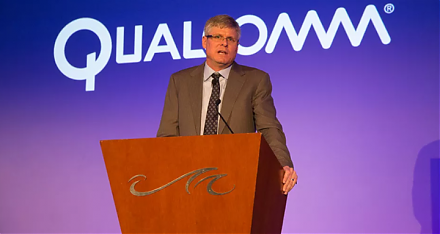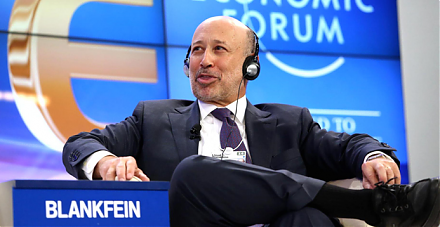Quantitative fundamental analysis
Our new podcast deep-dives into how generative AI tools, robots, avatars, and large language models (LLM) help substantially enhance human productivity. Today, the mainstream LLMs include OpenAI ChatGPT, Google Gemini and NotebookLM, Microsoft Copilot, Anthropic Claude, Alibaba Qwen, DeepSeek, Meta Llama, Amazon Alexa and Nova, Twitter xAI Grok, and Perplexity.
$META $MSFT $GOOG $GOOGL $AAPL $AMZN $BABA $BIDU $TME $KKR $IQ $BILI $JD $PDD $IONQ
$NVDA $AMD $INTC $ARM $CSCO $ORCL $T $TMUS $VZ $TSLA $NIO $RIVN $NET $CRWD $IBM $TSM
$SNPS $RACE $ZIM $MRK $AMGN $JNJ $BMY $LLY $NVO $GSK $COST $HPE $HD $PG $WMT $TGT
This fun podcast is about 10 minutes long (with smart AI podcast generation from Google NotebookLM).
https://bit.ly/4elAFKv
The top generative artificial intelligence (Gen AI) tools include OpenAI ChatGPT, Google Gemini and NotebookLM, Microsoft Copilot, Meta Llama, Amazon Alexa and Nova, Anthropic Claude, Twitter xAI Grok, Perplexity, Alababa Qwen, DeepSeek, Mistral, Midjourney, Synthesia, Jasper, and so forth. These Gen AI search engines apply large language models (LLM) and content generation tools to help enhance human lives with significantly greater productivity. Productivity gains often manifest in the common forms of AI-driven scripts, articles, images, podcasts, films, movies, and many other online contents. Gen AI avatars help translate text, imagery, and sound recognition into interpretable contents within only seconds. This recent Gen AI hype transforms and even revolutionizes the current high-tech stock market rally. Since the successful launch of OpenAI’s ChatGPT back in November 2022, these Gen AI virtual assistants have grown significantly to leverage the high performance of AI semiconductor microchips from Nvidia, AMD, Micron, TSMC, Pegatron, and many of their trade partners. In recent quarters, stock market investors revive their current interest in this modern Gen AI technology worldwide.
Foundational LLMs and Gen AI virtual tools, assistants, and avatars substantially enhance the high-skill process of online content generation. As a result, the stocks of Gen AI companies have had more than double-digit improvements in their stock market valuation, top-line sales revenue growth, and bottom-line profitability. Gen AI technology can help create new content generation in the form of text, imagery, video, audio, and code through natural language communication, rather than code snippets and arcane programming languages. These key transformative features distinguish the current Gen AI technology from the vast majority of its predecessors. We can view this Gen AI technology as the third generation of AI software research. Earlier iterations of AI technology either required computer scientists and software engineers to write deterministic code programs to perform specific tasks (Software 1.0), or required these specialists to statistically train complex neural networks on big data for specific tasks and predictions (Software 2.0). With Software 3.0 today, the foundational models leverage out-of-the-box capabilities to enhance their niche businesses with natural language reasons, explanations, and knowledge spillovers worldwide. These Gen AI base models help substantially transform both the logical and reasonable content generation through open-source application programming interfaces (API) without any laborious collection of big data.
This Gen AI transformation has begun to translate into a new economic reality. In some cases, developer productivity gains amount to double-digit percentages (at least 15% to 20% per annum) via Gen AI technology. This Gen AI technology can further enhance human-robot interactions and several other adjacent applications, especially in traditional service markets such as law, finance, medicine, illustration, as well as audio, voice, and video generation with smart data analytics. Many stock market investors regard this Gen AI technology as a major platform shift across all aspects of both the consumer and enterprise experiences.
This Gen AI transformation can cause new profound ripple effects, macroeconomic consequences, and policy implications. Recent empirical studies show that Gen AI usage can help boost U.S. annual labor productivity growth by 1.5-2.5 percentage points over the current decade. In the U.S. and many other rich economies, AI can eventually help raise annual global GDP by 7% to 15%. This global productivity lift can turn a relatively narrow AI-led U.S. stock market rally into a much broader one over the longer run. Specifically, S&P 500 stocks have already experienced 9% to 25% increases in fair asset market valuation in recent years, especially in the post-pandemic period. This Gen AI stock market trend turns out to be the new friend for many institutional investors worldwide.
However, the neural networks of these Gen AI tools differ from the neural networks of human brains. Gen AI machines can indeed perform reflexive statistical analysis, but these machines have virtually little capacity for human-like logical deliberations and reasons. Although these Gen AI machines learn and recognize patterns in text, imagery, audio, and video etc, the vast majority of machine-learning algorithms still revolve around the deep statistics of both words and proper responses to prompts. Specifically, these machine-learning algorithms cannot function like human brains to completely understand abstract concepts, such as the broad business judgment rule in law, dynamic equilibrium fair market valuation in finance, and the dopamine hypothesis in medicine. As a result, there is no internal model for these AI machine-learning algorithms to understand the world around them. One day the human race may achieve artificial general intelligence (AGI), but we are still far from AGI today. No finite dollar amount of stock market investment can change this current reality. When push comes to shove, stock market investors would need to make prudent investment decisions in support of better stock portfolio profitability, resilience, and diversification.
In terms of stock market valuation, the current AI stock market rally is pretty much like the past innovation booms. During the past innovation-led productivity booms, such as the widespread adoption of electricity from 1919 to 1929 and PCs and the Internet from 1996 to 2005, sharp and steady increases in stock market prices and returns turn into asset bubbles over the medium. These asset bubbles eventually burst in due course. In response to the widespread adoption of electricity, the Great Depression ensued in the 1930s. In response to the dotcom bubble, the subprime mortgage crisis and Global Financial Crisis arose in 2008-2009. Although the rising tide seems to lift all boats in the AI-led high-tech sector, the current AI stock market rally would eventually experience a more reasonable correction in due course.
In the meantime, the vast majority of Gen AI stocks continue to trade at reasonably attractive P/E and P/B multiples. It can be quite reasonable for many tech titans to drive the current powerful AI stock market rally. In light of this positive platform shift, the current AI stock market rally may or may not be a fundamentally shallow hype cycle. To the extent that many tech titans continue to apply AI foundational models for business purposes, the picks-and-shovels businesses are likely to benefit from this continuation. For AI, these fundamental picks-and-shovels businesses include semiconductor microchip manufacturers (Nvidia, AMD, TSMC, Micron, Intel, and so on), cloud computing hyperscalers (Amazon, Google, Microsoft, IonQ, Alibaba, and Tencent), and online infrastructure companies (Cisco, Oracle, AT&T, T-Mobile, and Verizon).
Below we provide hyperlinks to many other recent podcasts, surveys, research articles, and blog posts on global macro-finance, asset return prediction, trade, technology, fiscal-monetary policy coordination, and fundamental industry analysis for stock market investors worldwide. Key technological advancements include generative artificial intelligence (Gen AI) large language models (LLM), electric vehicles (EV), autonomous robotaxis (AR), virtual reality (VR) headsets, semiconductor microchips, high-speed broadband networks, telecoms, cloud services, social media platforms, quantum computers, and pharmaceutical treatments, medications, and therapies.
American exceptionalism often turns out to be the heuristic rule of thumb for better economic growth, low and stable inflation, full employment, and macro-financial stability.
In the broader modern monetary policy context, central banks learn to weigh the trade-offs between output and inflation expectations and macro-financial stress conditions.
Today, tech titans, billionaires, serial entrepreneurs, and venture capitalists continue to reshape and even disrupt global pharmaceutical investments for both better healthspan and longer lifespan.
Artificial intelligence continues to reshape the current global market for better biotech advances, medical innovations, and healthcare services.
The global market for GLP-1 anti-obesity weight-loss treatments now grows substantially to benefit more than 1 billion people worldwide by 2030.
Is higher stock market concentration good or bad for Corporate America?
Geopolitical alignment often reshapes and reinforces asset market fragmentation in the broader context of financial deglobalization.
The global cloud infrastructure helps accelerate the next high-tech revolutions in electric vehicles (EV), virtual reality (VR) headsets, artificial intelligence (AI) online services, and the metaverse.
The new homeland industrial policy stance tilts toward greater global resilience across the major high-tech supply chains worldwide.
China poses new threats to the U.S. and its western allies.
How can generative AI tools and LLMs help enhance human productivity?
What are the macrofinancial ripple effects of central bank digital currency (CBDC) design, issuance, and broad user adoption?
Both BYD and Tesla have become serious global manufacturers of electric vehicles (EV) worldwide.
With U.S. fintech patent approval, accreditation, and protection for 20 years, our AYA fintech network platform provides proprietary alpha stock signals and personal finance tools for stock market investors worldwide.
We build, design, and delve into our new and non-obvious proprietary algorithmic system for smart asset return prediction and fintech network platform automation. Unlike our fintech rivals and competitors who chose to keep their proprietary algorithms in a black box, we open the black box by providing the free and complete disclosure of our U.S. fintech patent publication. In this rare unique fashion, we help stock market investors ferret out informative alpha stock signals in order to enrich their own stock market investment portfolios. With no need to crunch data over an extensive period of time, our freemium members pick and choose their own alpha stock signals for profitable investment opportunities in the U.S. stock market.
Smart investors can consult our proprietary alpha stock signals to ferret out rare opportunities for transient stock market undervaluation. Our analytic reports help many stock market investors better understand global macro trends in trade, finance, technology, and so forth. Most investors can combine our proprietary alpha stock signals with broader and deeper macrofinancial knowledge to win in the stock market.
Through our proprietary alpha stock signals and personal finance tools, we can help stock market investors achieve their near-term and longer-term financial goals. High-quality stock market investment decisions can help investors attain the near-term goals of buying a smartphone, a car, a house, good health care, and many more. Also, these high-quality stock market investment decisions can further help investors attain the longer-term goals of saving for travel, passive income, retirement, self-employment, and college education for children. Our AYA fintech network platform empowers stock market investors through better social integration, education, and technology.
Generative artificial intelligence (Gen AI) uses large language models (LLM) to create online contents with better human productivity. - Blog - AYA fintech network platform provides proprietary alpha stock signals and personal finance tools for stock market investors.
We explain technological advances in Generative Artificial Intelligence (Gen AI).
https://ayafintech.network/blog/generative-artificial-intelligence-uses-large-language-models-and-content-generation-tools-to-enhance-human-productivity/







